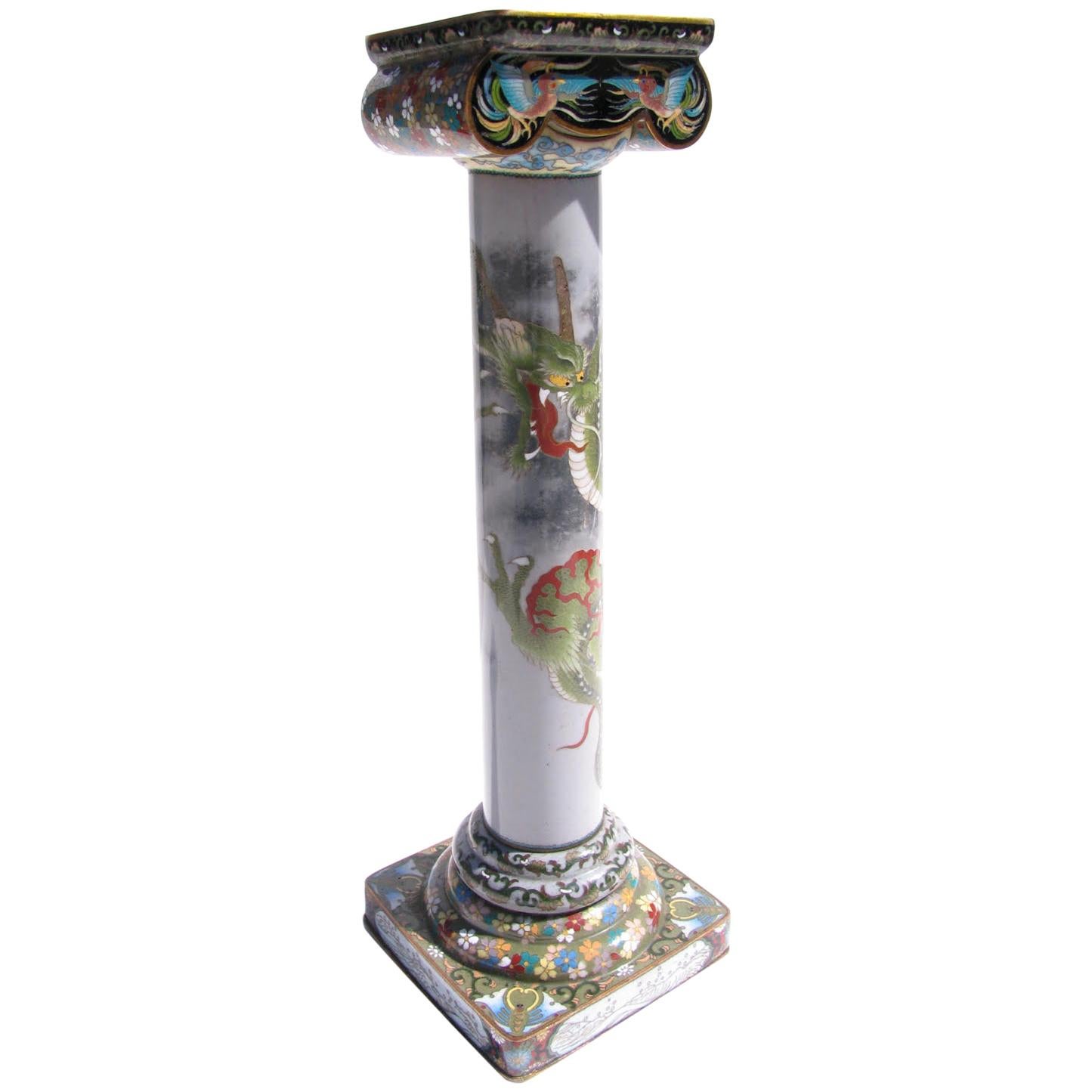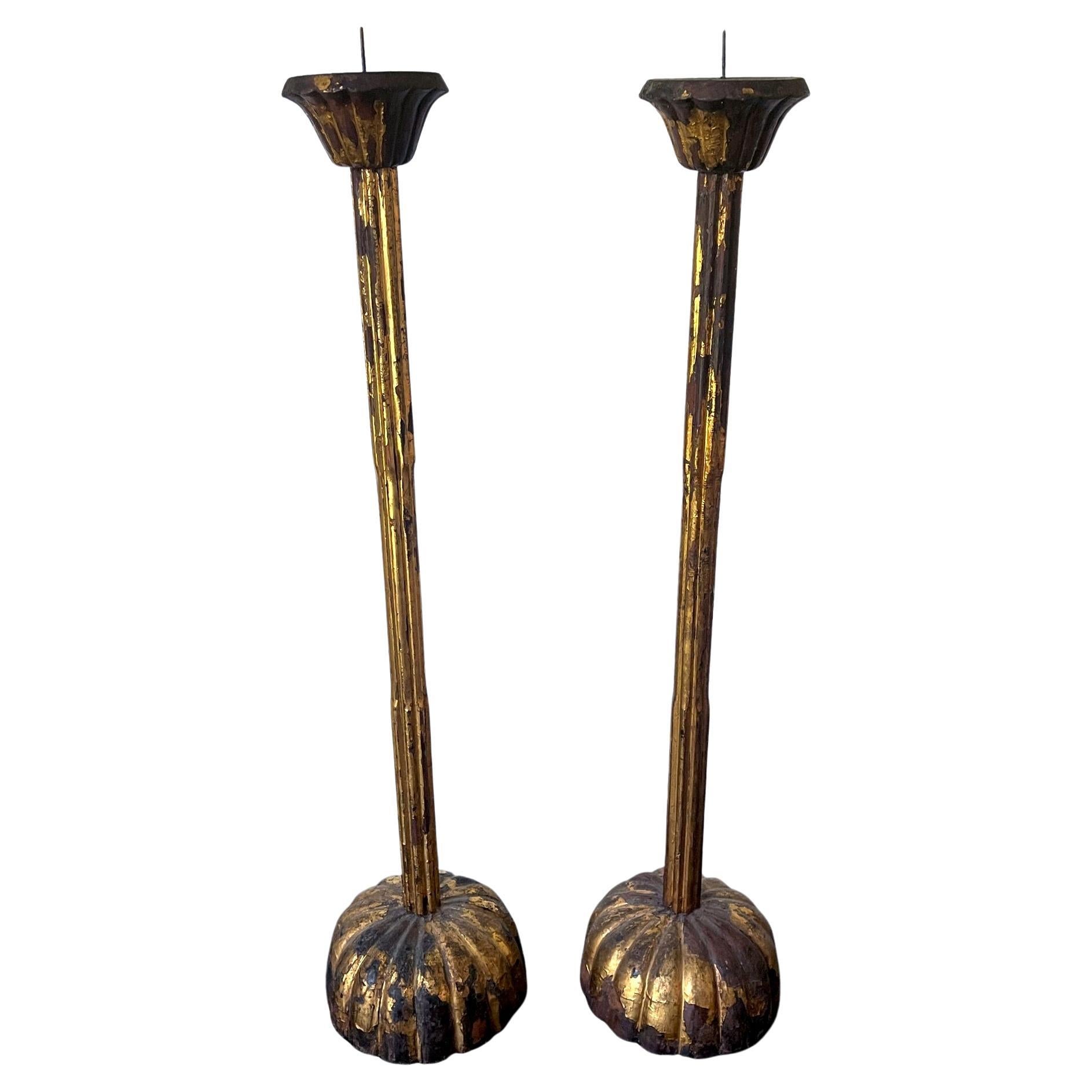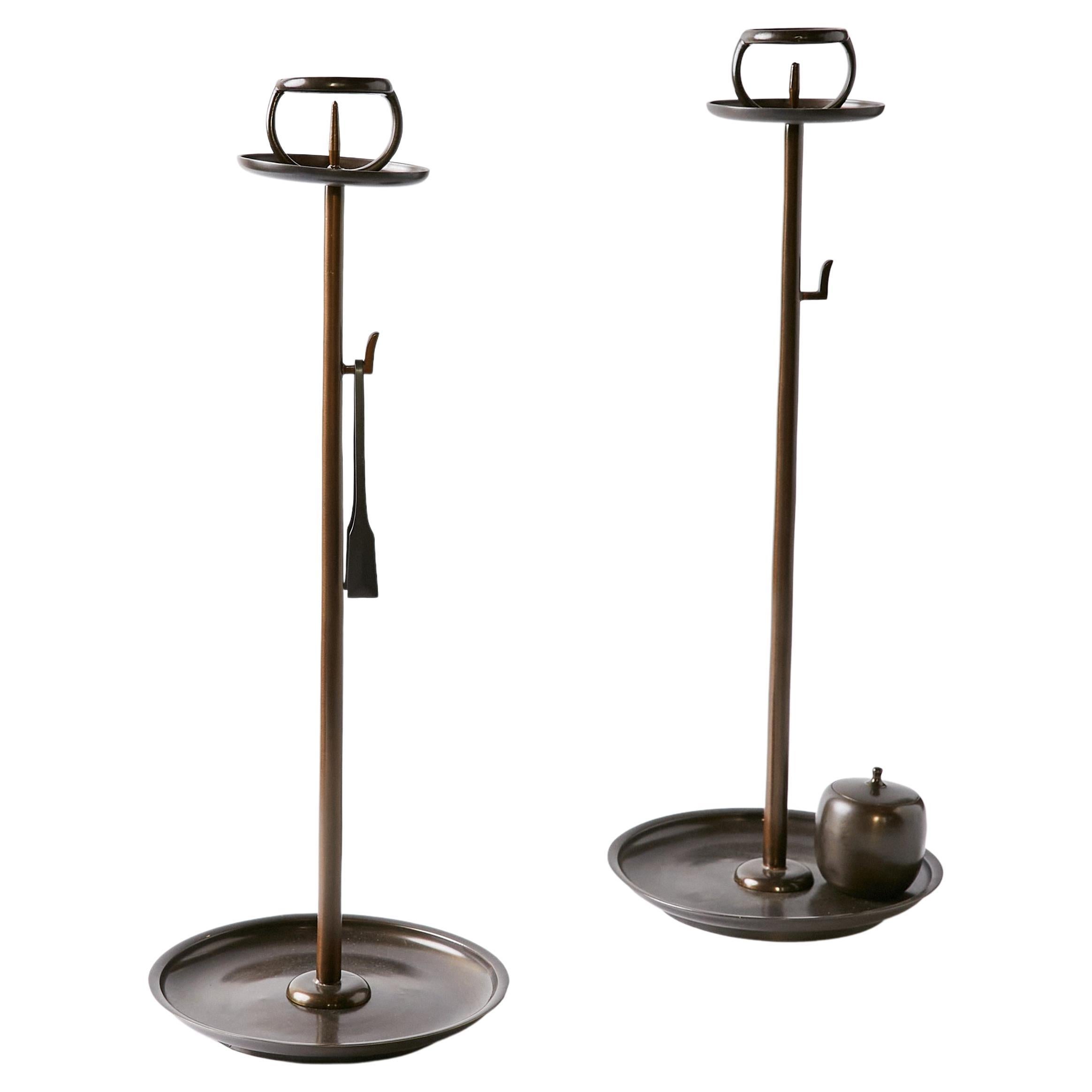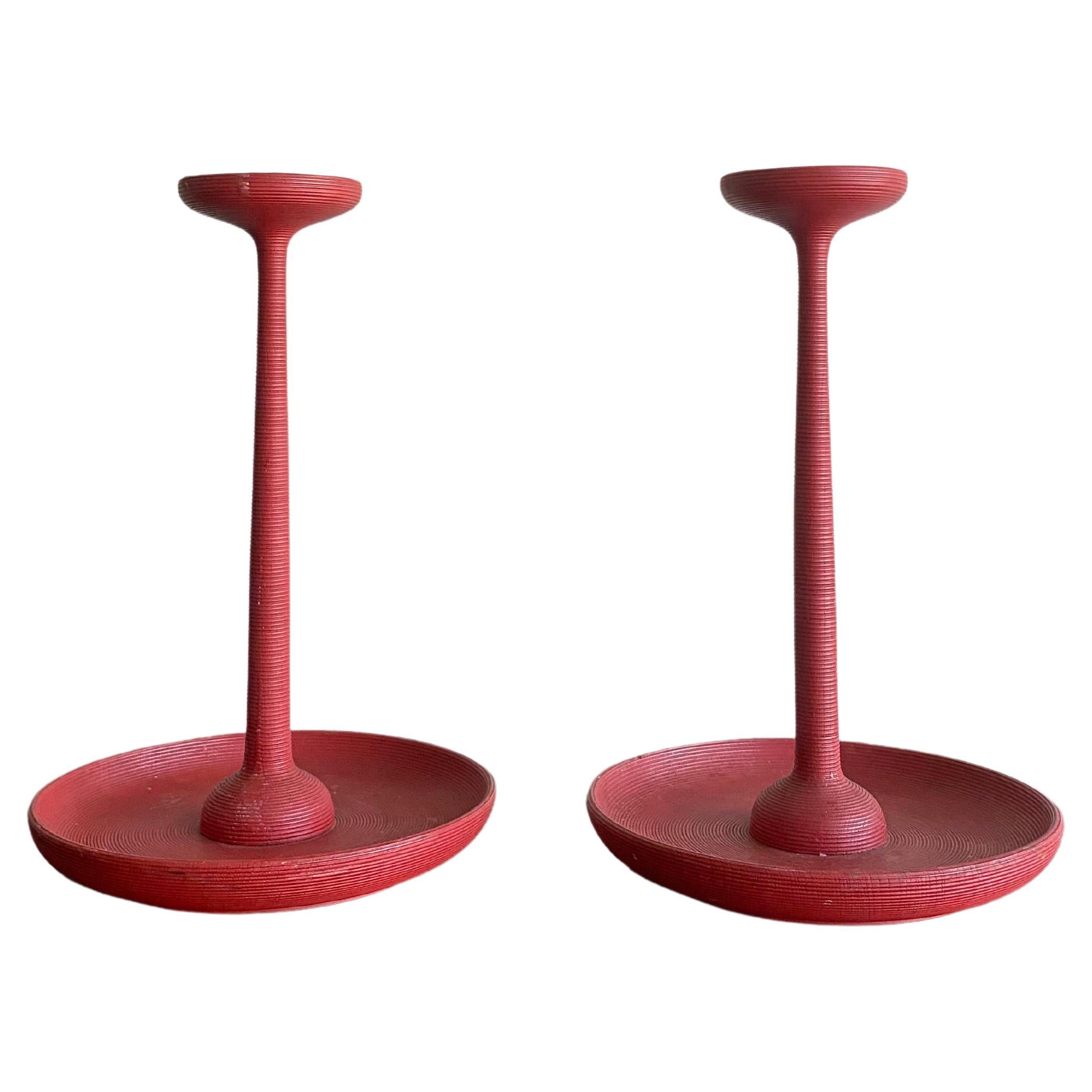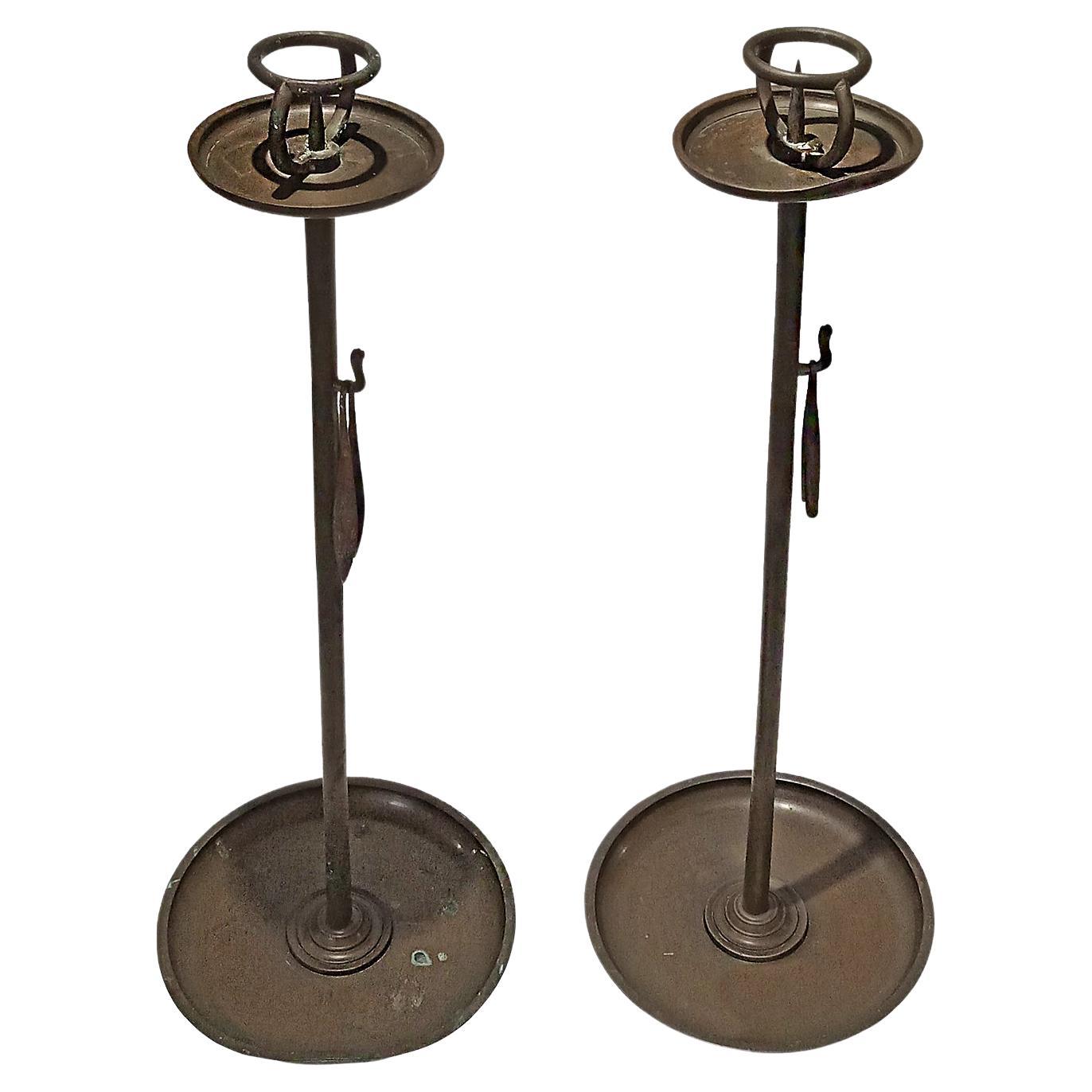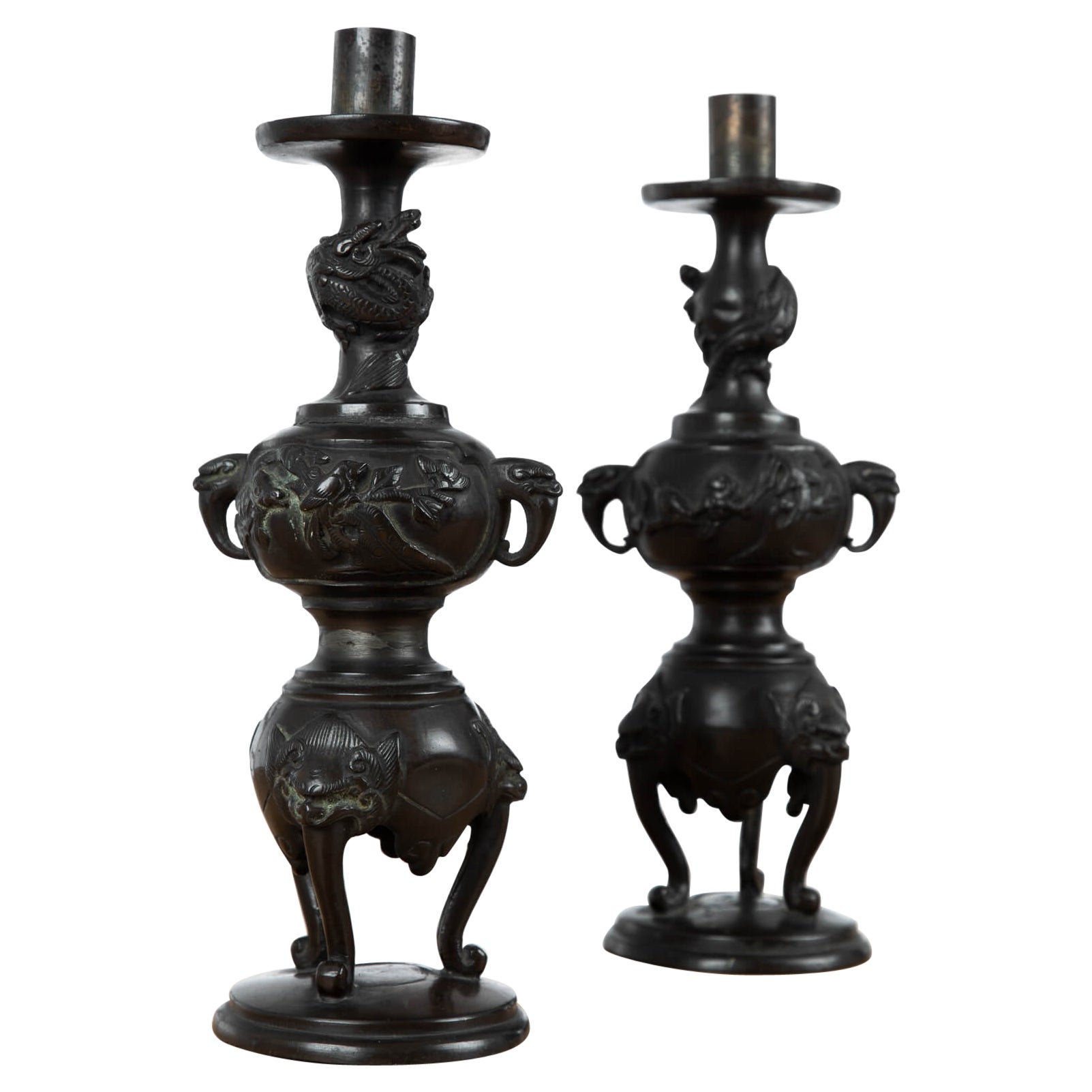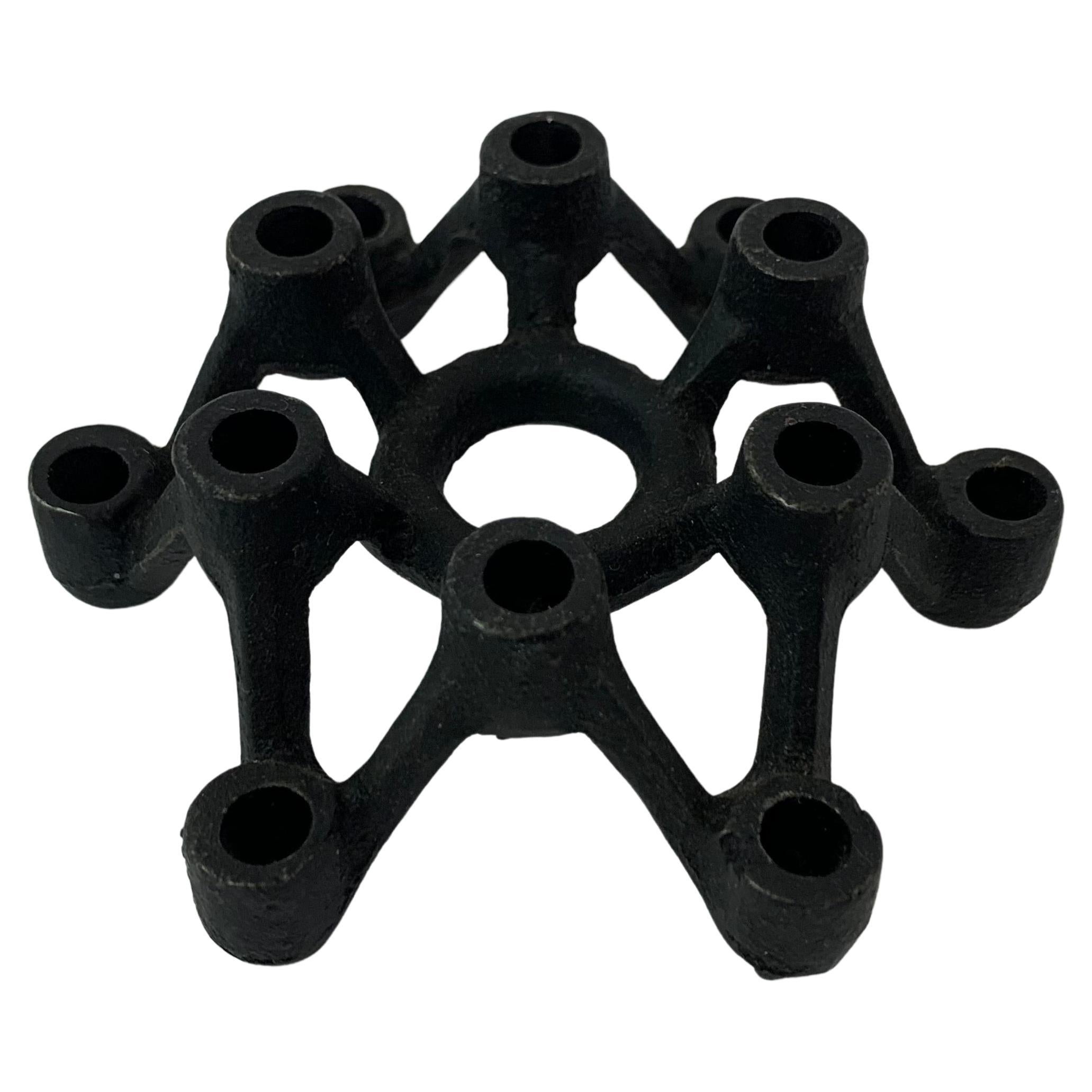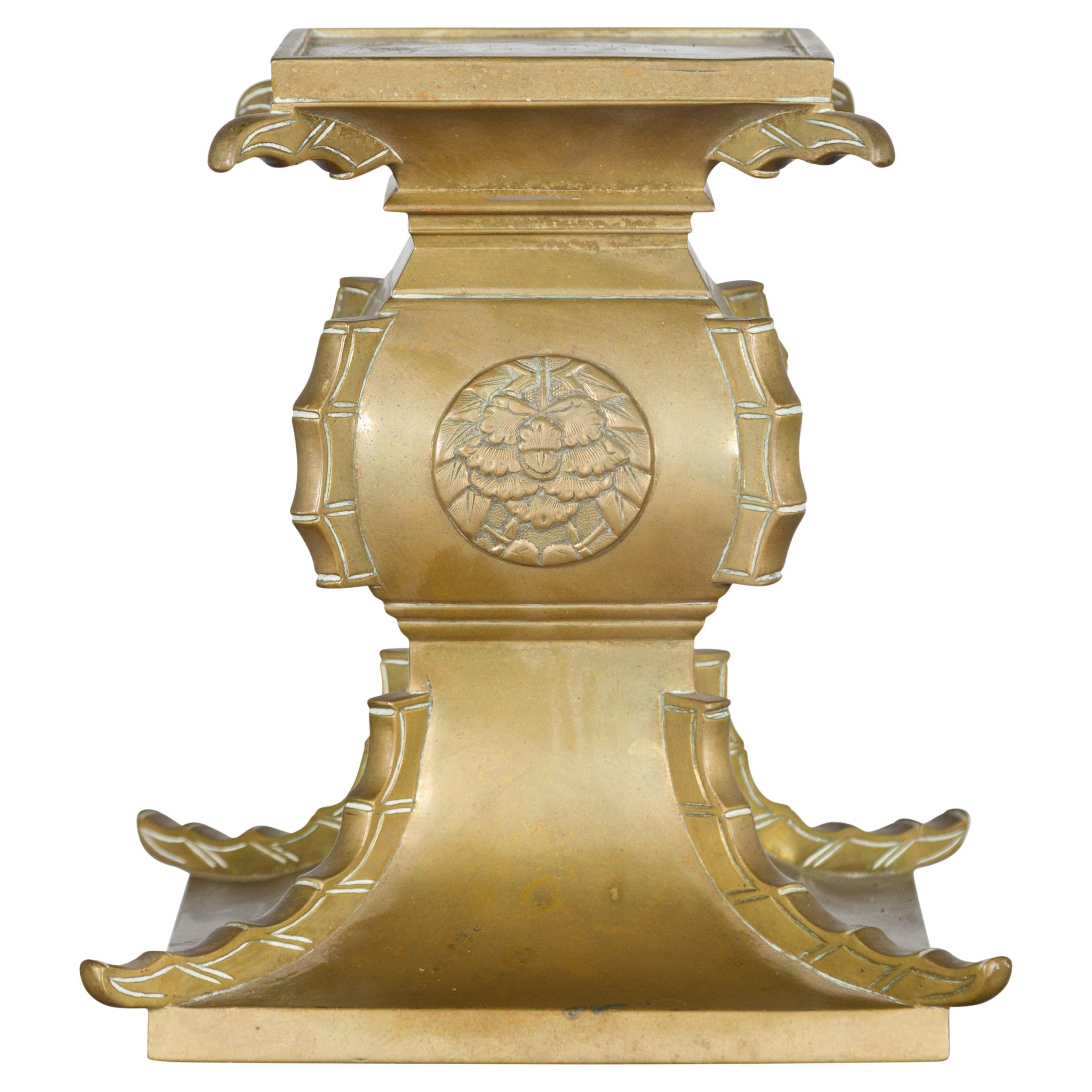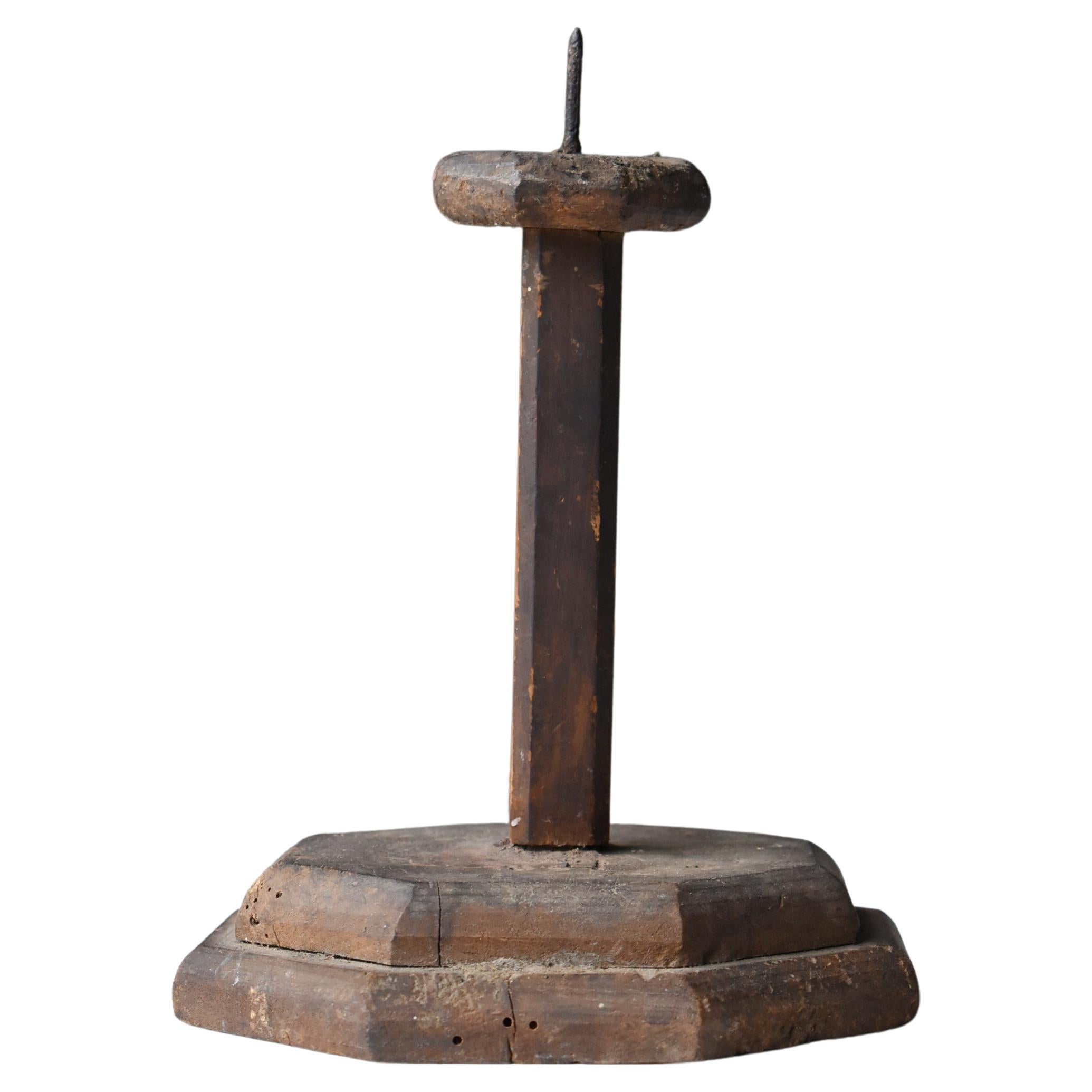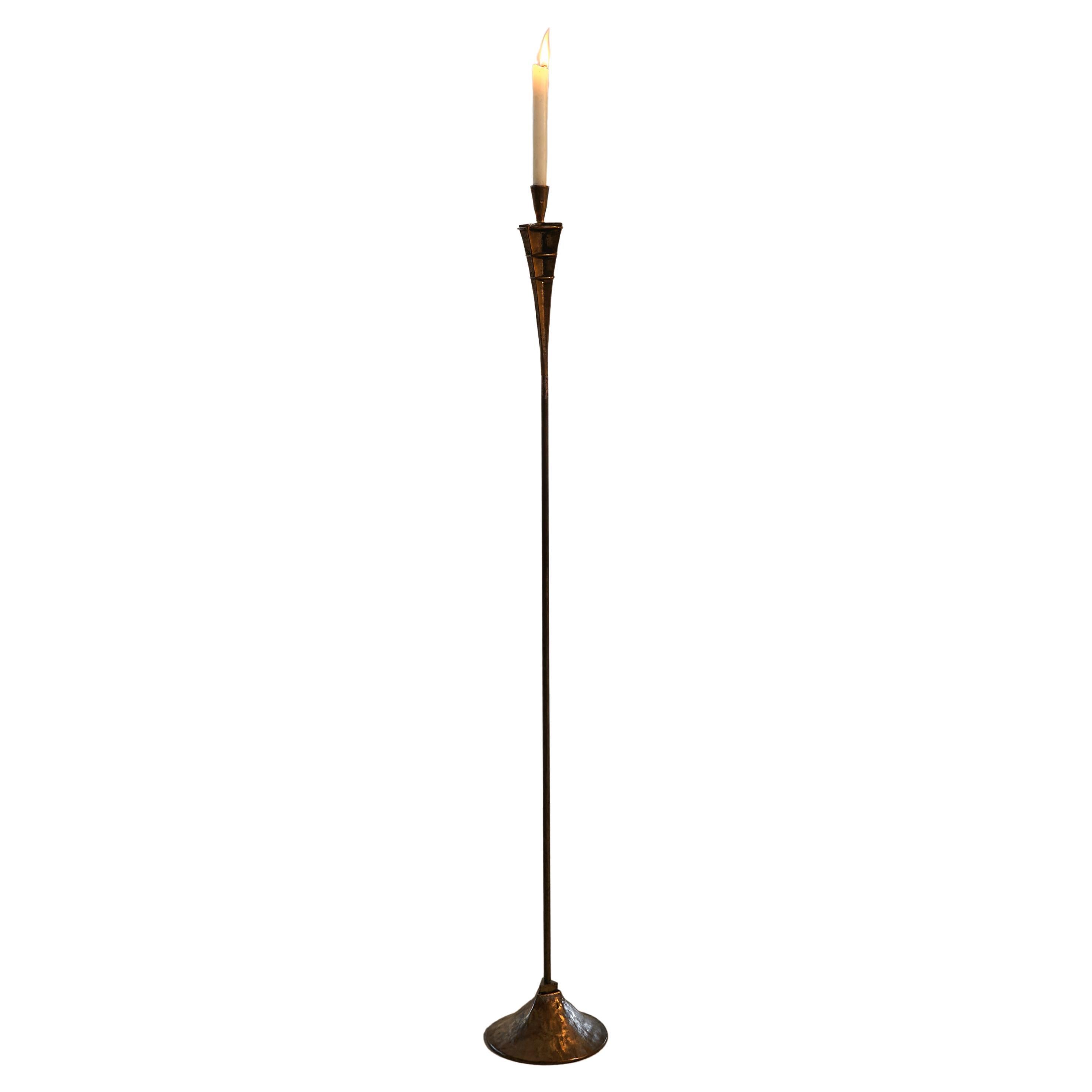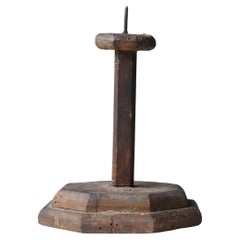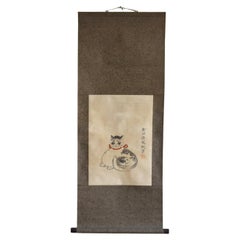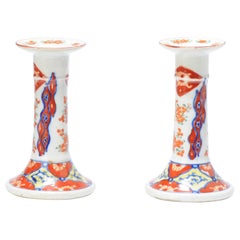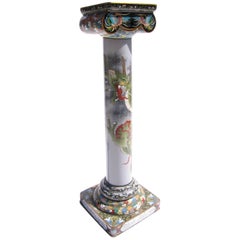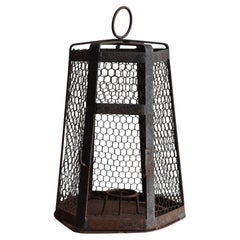
Japanese Edo Period Candlesticks / Hanging Candlesticks / Candle Stands
View Similar Items
Want more images or videos?
Request additional images or videos from the seller
1 of 15
Japanese Edo Period Candlesticks / Hanging Candlesticks / Candle Stands
About the Item
- Dimensions:Height: 13.19 in (33.5 cm)Width: 7.88 in (20 cm)Depth: 7.88 in (20 cm)
- Style:Edo (Of the Period)
- Materials and Techniques:
- Place of Origin:
- Period:
- Date of Manufacture:1800-1868
- Condition:
- Seller Location:Sammu-shi, JP
- Reference Number:1stDibs: LU5487224286802
About the Seller
5.0
Platinum Seller
These expertly vetted sellers are 1stDibs' most experienced sellers and are rated highest by our customers.
Established in 2015
1stDibs seller since 2020
1,105 sales on 1stDibs
Typical response time: 4 hours
More From This SellerView All
- Japanese Antique Candle Stick 1800s-1860s / Wabi Sabi Object FigurineLocated in Sammu-shi, ChibaThis is a very old Japanese candlestick. It is from the Edo period (1800s-1860s). The material is cedar. It was found in an old farmhouse. It has a very unique shape. It is an exce...Category
Early 20th Century Japanese Edo Candlesticks
MaterialsCedar
- Japanese antique wall-hanging wooden Buddha statue/Edo period/1603-1868/WabisabiLocated in Sammu-shi, ChibaThis is a wooden Buddha statue made around the Edo period in Japan. Although it is a small Buddha statue, it has a strong presence and is beautiful. Originally, there was a wooden pe...Category
Antique 18th Century Japanese Edo Sculptures and Carvings
MaterialsCypress
- Antique hanging scroll of Japanese cat/Late Edo-Meiji period/Cat paintingLocated in Sammu-shi, ChibaThis is a picture of a cat drawn by a person named "Toshizumi Nitta" from the end of the Edo period to the beginning of the Meiji period. She is a very simple and cute cat. He is a vassal of the Tokugawa Shogunate, born in Ota City, Gunma Prefecture (southern part of Gunma Prefecture). He was related to the Tokugawa family and lived in a large mansion in the Ota clan in Gunma prefecture. However, the Nitta family's territory was very small, and they were by no means a wealthy vassal. He seems to have lived quite poorly. So he painted cats and sold them to people. The Nitta family continued to draw pictures of this cat for four generations. "Nitta toshizumi" is equivalent to the fourth generation. During the Edo period, sericulture was thriving in the Kanto region. Cats were said to be the gods of silkworms, as they drive away mice, the natural enemies of silkworms. It was the Nitta family who drew such a cat on paper, pasted it in the silkworm chamber, and sold it as a mouse repellent. There were also other monks who painted pictures of cats, but the Nitta family in particular was related to the Tokugawa family, so people believed that paintings of cats had special powers. , a lot of paintings...Category
Antique Late 19th Century Japanese Edo Paintings
MaterialsPaper
- Japanese Antique Wooden Drawer/Late Edo-Meiji Period/1800-1900/TV StandLocated in Sammu-shi, ChibaThis is an old Japanese wooden drawer made in the late Edo period to around the Meiji period (1800-1900). The material is made of cedar, and the unique wood grain is very beautiful....Category
Antique 19th Century Japanese Edo Commodes and Chests of Drawers
MaterialsCedar
- Japanese Antique "Staircase Chest" 'Late Edo Period-Meiji Period' /CabinetLocated in Sammu-shi, ChibaWe have an aesthetic sense peculiar to Japanese people. And we introduce the unique items that only we can do, the route of purchasing in Japan, the experience value so far, and the way that no one can imitate. Japanese antique black chest "staircase chest...Category
Antique 19th Century Japanese Edo Furniture
MaterialsCedar
- Japanese lacquered wooden antique display stand/temple small stand/Edo/1800sLocated in Sammu-shi, ChibaThis is an exhibition stand used in temples around Oita Prefecture, Japan. Basically, it is a stand for placing incense burners and offerings in front of the Buddha statue. The name ...Category
Antique 19th Century Japanese Edo Furniture
MaterialsWood, Cypress
You May Also Like
- Antique Japanese Porcelain Candle Sticks Edo or Meiji Period, 19th CenturyLocated in Amsterdam, Noord HollandWonderfull and nicely made artifact of high quality. A pair of Polychrome candle sticks with floral design. Additional information: Material: Bronze...Category
Antique 19th Century Japanese Candlesticks
MaterialsBronze
- Japanese Meiji Period Cloisonne Dragon Candlestick HolderLocated in New York, NYExquisite Japanese Meiji period Cloisonne candlestick holder decorated with a dragon. Finely detailed metal and enamel work. In excellent age a...Category
Antique 19th Century Japanese Japonisme Candlesticks
MaterialsMetal
- Pair of Large Japanese Carved Wood Temple Candleholders Edo PeriodLocated in Atlanta, GAA tall pair of Japanese carved wood candle holders circa early 19th century (late Edo Period). The pair is carved in the typical form with a block base in the shape of stylized chrysanthemums and long fluted stem with changes in diameter that supports a grooved holder fitted with metal pricket. These types of oversized candle holders were traditionally used in Buddhist temples or Samurai's resident where they were placed on the altar table for worshiping. What is extraordinary of these candle stickers is that they feature a wonderfully conserved surface with lacquered gold leaf. The sparkling gold on the well weathered surface is visually striking. The professional conservation was performed in 2007 and as a result, the pieces display a wonderful aged Wabi-Sabi patina. The piece retains an original invoice from Far Eastern Antiques...Category
Antique Early 19th Century Japanese Japonisme Lacquer
MaterialsGold Leaf
- Pair of Antique Shokudai Candle Stand from JapanLocated in Philadelphia, PASet of two antique Shokudai candle stands. Made in bronze.Category
Antique 19th Century Japanese Candlesticks
MaterialsBronze
$2,190 / set - Japanese Red Lacquer Ribbed Candle Holder Pair, Meji Period c. 1900Located in Jimbaran, BaliThis stunning pair of Japanese red lacquered candle holders are exceptionally rare. They feature an elegant circular design with full height ribbed patterning. They are crafted from ...Category
Early 20th Century Japanese Meiji Furniture
MaterialsWood, Lacquer
- Set Of 3 Altar Candlesticks Candle Holder - Bronze - Period: XIXth CenturyLocated in CRÉTEIL, FRA delightful set of three bronze altar candlesticks. Originally, candlesticks usually stood on three legs, topped with a knot and a wick to hold the wax. In the centre of this cup is a spike on which the candle is placed. The candles on top are made of wax, white for festivals, yellow for funeral services or times of penitence. In accordance with traditional practice, the candlesticks are placed on the altar itself or on a tier that is itself placed on the altar. They are framed by a cross which, if possible, matches them. Period : 19th Century Dimensions : Pair: Height: 47.5cm - Width of base: 14.5cm - Diameter of bobèche: 12.5cm Dimensions : Height : 49cm - Base width : 16cm - Wick diameter : 13cm According to custom, the number of candlesticks is two, four or six, depending on the degree of solemnity of the celebrations. A seventh candle is required when the diocesan bishop celebrates a stationary (pontifical) Mass, and even more so when the Pope is Bishop of Rome. The sacred light is first and foremost a symbol of joy and, in ancient times, a sign of respect and honour. Candles should be made of beeswax. Derived from the juice of flowers, the wax represents the flesh of Christ formed from the virginal body of Mary, flesh that will be consumed for us. When lit, the candle has multiple meanings. First of all, it represents Jesus, the light without which we grope in broad daylight. The flame is the sign of Christ's divinity. It also symbolises faith in these mysteries. White candles, made of purified wax, are symbols of joy and gladness, while yellow candles...Category
Antique 19th Century French Other Candlesticks
MaterialsBronze

